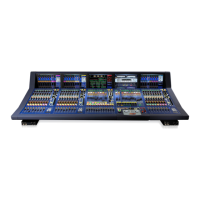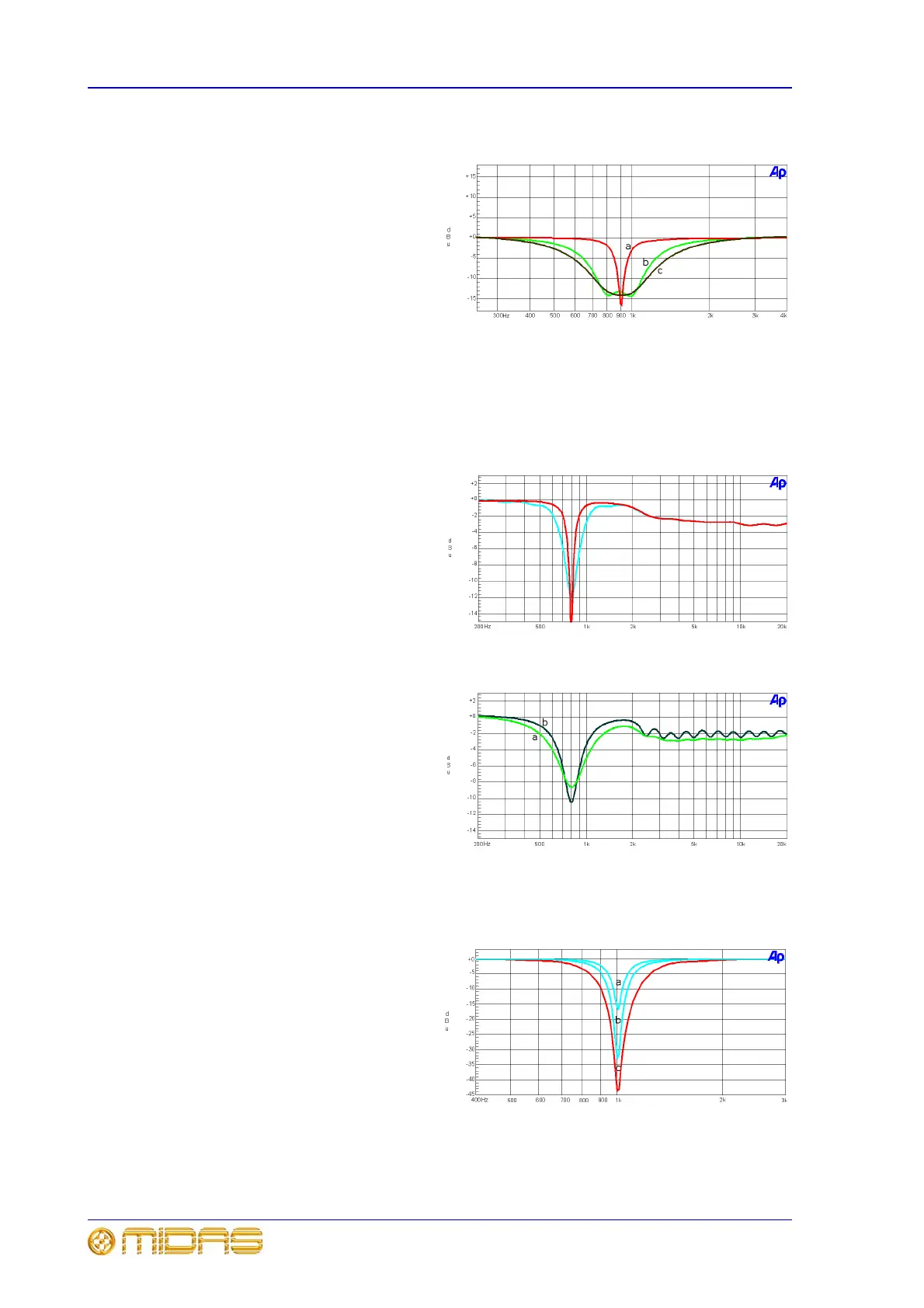228 Chapter 11: Graphic Equaliser (GEQ)
XL8 Control Centre
Operator Manual
Corrective use of notch filters
Responses of Proportional-Q and Symmetrical-Q
Overlapping notch filters
The notch filters on the GEQ can be used to
eliminate a common problem with graphic
equalisers: the control of frequencies that lie
between the ISO standard frequency centres. In
the example shown right, to cut 900Hz a single
notch filter can be used to produce a steep notch
in the frequency response without affecting
adjacent frequencies (a). In contrast with a
Symmetrical-Q equaliser, the only solution
available is to cut both the 800Hz and 1kHz
faders, and while there is nearly 16dB of attenuation at 900Hz, a very broad range of frequencies
are also affected, particularly when a Symmetrical-Q equaliser with a wide response is used (c). A
narrow Symmetrical-Q response affects a less broad range of frequencies, although at the
expense of less attenuation at the desired frequency (b).
The Proportional-Q response of the GEQ
simultaneously allows gentle contouring of the
frequency spectrum and precise control of
specific problem frequencies. The sweepable
notch filters further enhance this capability. The
blue trace (a) shows a high shelf filter created
using the faders from 2.5kHz upwards and a
notch created by fully cutting the 800Hz fader
(channel A in example 3 on page 227). The red
trace (b) shows the same shelf filter response,
but using a notch filter to cut 800Hz; this illustrates the greater precision offered by the notch
filters (channel B in example 3 on page 227).
In contrast, the limitation of Symmetrical-Q
equalisers can be seen in the adjacent traces - a
wide response (a) gives a smooth shelf filter but
affects a very broad range of frequencies when
attempting to use it as a notch filter, while a
narrow response (b) gives a much sharper
notch, but at the expense of excessive ripple in
the shelf filter. Even with a narrow response,
the Symmetrical-Q equaliser affects a broader
range of frequencies than using the
Proportional-Q response of the GEQ’s faders.
b
a
The ability to overlap the notch filters, both with
each other and with the GEQ bands, allows very
deep notches to be created. The traces shown
right give the responses of a single notch filter,
two overlapped notch filters (a) and two notch
filters overlapped with an EQ band (b), each
resulting in greater attenuation (c). Nearly
45dB of attenuation is possible when using the
notch filters in conjunction with the EQ bands.

